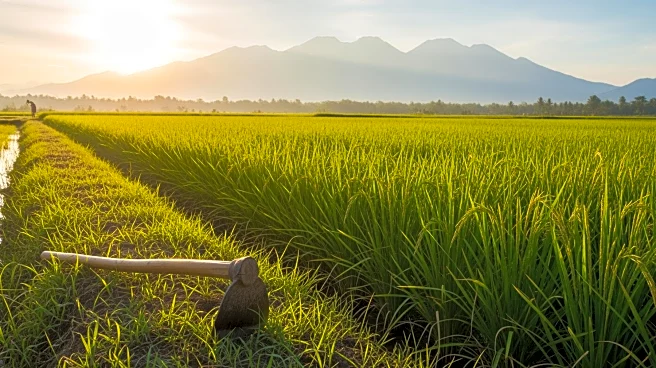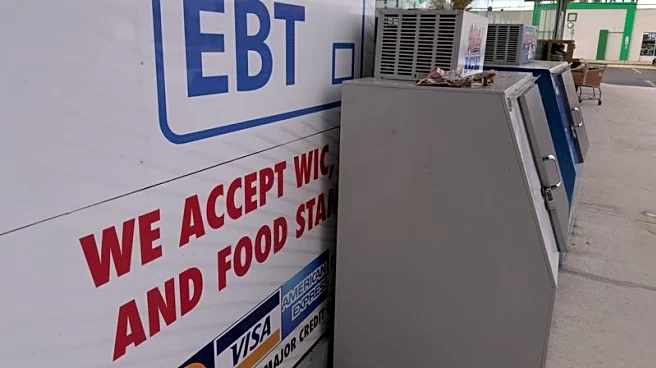What's Happening?
The USDA is processing and distributing payments from the Price Loss Coverage (PLC) and Agriculture Risk Coverage, county option (ARC-CO) programs for the 2024 crop year. These payments are expected to total approximately $2.6 billion, with ARC-CO payments accounting
for 89% of the total. PLC payments are anticipated for peanut and seed cotton base acres, while ARC-CO payments are expected for various crops across multiple counties. Corn and soybean base acres are projected to receive significant ARC-CO payments, with corn payments estimated at $1.3 billion and soybean payments at $618 million. The payments are triggered based on county yields falling below benchmark levels, with corn requiring a 2% yield drop and soybeans a 4% drop.
Why It's Important?
The distribution of ARC-CO and PLC payments is crucial for supporting farmers facing tight margins and potential negative returns. These payments provide a financial safety net, helping stabilize farm incomes amid fluctuating market conditions. The significant allocation of funds underscores the importance of government support in maintaining agricultural viability and addressing economic challenges. The payments also reflect broader policy efforts to mitigate the impact of market volatility and ensure the sustainability of U.S. agriculture.
What's Next?
The USDA will continue processing ARC-CO and PLC payments, with further estimates expected following the release of the November WASDE report. Stakeholders will monitor these developments closely, as they influence financial planning and operational strategies for farmers. The Trump administration and Congress may consider additional rounds of ad hoc assistance, potentially impacting future agricultural policy and funding allocations. The ongoing analysis of payment distributions will inform future policy decisions and support mechanisms for the agricultural sector.
Beyond the Headlines
The reliance on government payments highlights the challenges faced by U.S. farmers in maintaining profitability amid market fluctuations. The distribution of funds raises questions about the long-term sustainability of such support mechanisms and their impact on production costs. The potential for additional assistance from the Trump administration and Congress reflects broader economic concerns and the need for strategic policy interventions. The payments also underscore the interconnectedness of agricultural policy, market dynamics, and economic stability.















